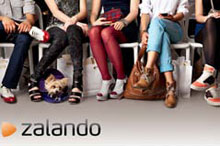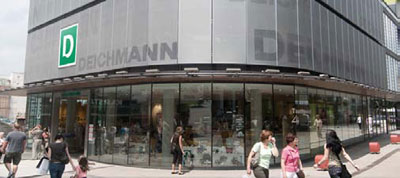
Second European destination for Italian footwear, and third overall for Italian exports, during the first five months of 2016, it registered a further +4.8% over the same period in 2015, for a total of 400.81 million euros. Germany is also one of the few European markets not in crisis, with a dynamic trend in domestic consumption. We asked Mr. Siegfried Jacobs, President of BDSE, the Federal Association of the German Footwear Retail Trade, if this dynamism also characterizes more or less the retail of footwear.
The consumer market in Germany is generally speaking in good health. – was his answer – Unemployment is fairly low. Notwithstanding this, after the first ten months of the year, specialized retail experienced a drop in sales between 3 and 4 percent. The climatic conditions have been counterproductive and online business is continuing to gain market shares. So, even if Germany is not experiencing a crisis in consumption, footwear retail is still in difficulty. There are too many products on the market and the surplus of proposals, fierce competition, excess of marked down products, and insufficient product innovation, make it difficult for retailers to do business.
 Who are the biggest players in the sector and what is their share of the market?
Who are the biggest players in the sector and what is their share of the market?
The biggest retailer in the market is Deichmann which, on its own, holds a share equal to 17% of the market. The other big players are Reno and Görtz. Big and mediumsized retailers together hold a share of the market that is equal to 45%.
In what way has Internet sales influenced the market?
The online sales of footwear continues to grow and by now holds a share that oscillates between 17 and 18% of the market. Obviously, the Internet as a sales channel has reduced the sales and shares of retailers. And, above all, stores in rural areas and small cities are falling to the competition. From the other end, around 20% of retailers also sell online, both through their own virtual stores, and through Internet platforms like Amazon or Ebay.
What role does Made in Italy footwear hold in German retail? What is its sale trend?
Italian imports hold a share that is equal to 4.5% out of the total number of imports made by Germany. From 2014 to 2015, Italian imports grew by 6%.
ZALANDO, THE GERMAN E-TAILOR CONTINUES TO GROW
 One of the factors that has put German footwear retail into crisis is represented by the e-commerce sales channel, which features Zalando as one of its biggest players. This online footwear platform, which was first created in 2008 with its headquarters in Berlin, today has diversified its assortment of products, extending them to also include apparel and accessories. Moreover, today, it is present not only in Germany, but also in the main European markets. With an annual average growth estimated at around 25%, Zalando during the first three quarters of 2016 reached a new record sales figure of 2,547.4 million euros, which is +17.1% over the same period in 2015.
One of the factors that has put German footwear retail into crisis is represented by the e-commerce sales channel, which features Zalando as one of its biggest players. This online footwear platform, which was first created in 2008 with its headquarters in Berlin, today has diversified its assortment of products, extending them to also include apparel and accessories. Moreover, today, it is present not only in Germany, but also in the main European markets. With an annual average growth estimated at around 25%, Zalando during the first three quarters of 2016 reached a new record sales figure of 2,547.4 million euros, which is +17.1% over the same period in 2015.


